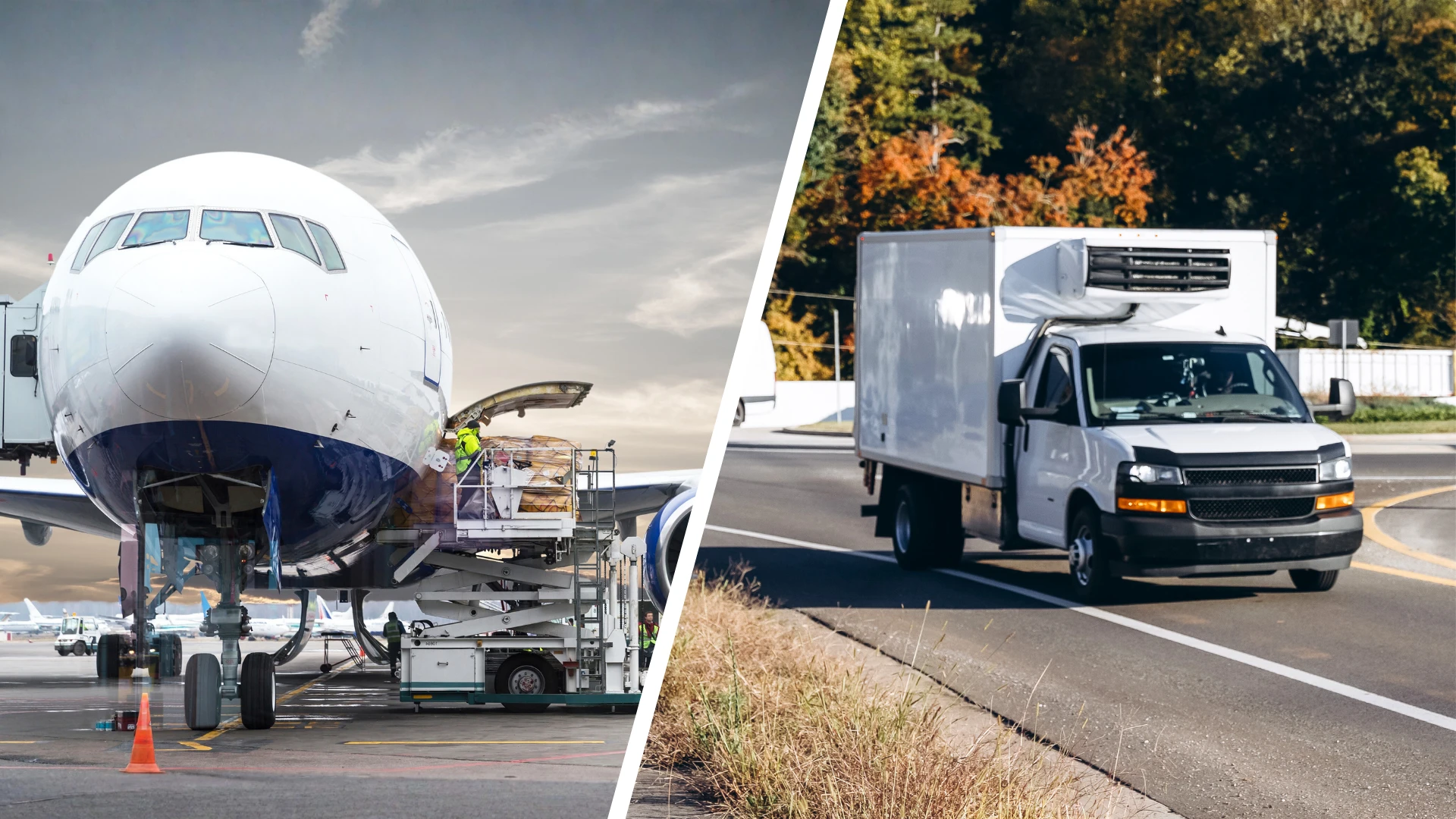
Staying ahead in business often means an ability to forecast challenges you may face. And cold-chain logistics is no exception. As the New Year is just around the corner, it’s a good time to look at key trends that await us in 2024. So today, we’ll look at some cold-chain freight forecasts derived from market analysis, current trends, as well as business and customer expectations. Stay with the RVN blog for insightful content.
Trend 1: Enhanced Visibility and Monitoring
The year 2024 is witnessing a significant surge in investment in software focused on real-time monitoring of cargo conditions. This groundbreaking advancement is predominantly fueled by GPS technology and Artificial Intelligence (AI), steering the sector toward new heights of transparency and operational efficiency.
AI’s role in deciphering complex data sets ensures stakeholders can make more informed decisions, mitigating risks and enhancing overall operational effectiveness. Insights from industry giants like Maersk highlight a similar trajectory. They emphasize the necessity of such technologies in addressing the growing demand for meticulous cargo monitoring, ensuring that sensitive products are transported under optimal conditions. This trend has become a new standard, reshaping the cold-chain freight industry.
Trend 2: Pharmaceutical Industry Growth
In the coming year, logistics experts predict a notable increase in the pharmaceutical industry, driven by the global population’s aging and the middle class’s growth. Industry analyses show a clear link between the expansion of the middle-class population and a rise in pharmaceutical usage.
As the pharmaceutical industry expands, logistics providers like RVN are gearing up to manage the complexities associated with transporting sensitive medical products. The need for specialized cold-chain solutions is more critical than ever, ensuring that medications are delivered in optimal conditions, thereby safeguarding public health and meeting rising global standards.
Trend 3: Increased Automation
In 2024, RVN is embracing the trend of escalating automation within the cold-chain freight sector. This move is a strategic response to the persistent labor shortages challenging the industry. Automation technologies should fill this gap and significantly enhance operational efficiency.
Advanced robotics and automated systems are being integrated into warehousing and transportation processes. As highlighted in many insight reports, these innovations are crucial for optimizing cold-chain logistics, from inventory management to the final delivery stages. This shift towards automation also promises greater accuracy, speed, and reliability in handling temperature-sensitive goods, ensuring they reach their destinations in pristine condition.
Trend 4: Sustainability Initiatives
Sustainability is taking center stage in the cold-chain freight industry, with companies like RVN leading the charge. The focus is on transitioning towards renewable energy sources and upgrading infrastructure to boost efficiency. This shift aligns with emerging global standards and customer expectations.
The industry is moving towards wider implementation of green technologies. These include solar-powered cold storage facilities and electric vehicles for transportation, which help reduce carbon footprints and operational costs. Moreover, infrastructure improvements are geared towards enhancing energy efficiency, minimizing waste, and promoting a more sustainable supply chain.

Trend 5: Investment in Fresh Produce Logistics
2024 should also mark a heightened focus on investments in the logistics of fresh produce. This initiative primarily revolves around advanced packaging and state-of-the-art storage facilities. These enhancements are crucial for maintaining the freshness and quality of perishable goods during transportation.
In response, logistics companies would invest in technologies like modified atmosphere packaging and temperature-controlled containers. Additionally, developing sophisticated storage facilities equipped with the latest cooling systems is critical in ensuring that fresh produce is stored under optimal conditions. This investment supports food safety and contributes to reducing food waste, aligning with global sustainability goals.
Trend 6: Stronger Integration in Supply Chains
Stronger integration within supply chains worldwide is another oncoming 2024 trend. It is characterized by the formation of strategic alliances and partnerships aimed at enhancing both efficiency and sustainability in cold-chain logistics. The focus is on creating cohesive networks that streamline operations and improve collaboration across different sectors.
By aligning with partners who share similar values and objectives, cold-chain logistics providers can improve their logistical coordination and offer more robust and sustainable solutions to their customers. This interconnectedness ensures a seamless flow of goods, reduces redundancy, and optimizes resource utilization. These strategic partnerships enhance operational capabilities and set new benchmarks for sustainability in the industry.
Trend 7: Market Growth Despite Economic Headwinds
Russian-Ukrainian and Israel-Hamas wars have had a dramatic impact on the global economy. Nevertheless, despite prevailing economic headwinds, 2024 is recognized as a year of market growth in cold-chain freight. This resilience is already noticeable in specific regions, defying broader economic challenges.
According to recent insights, areas like Asia-Pacific and Latin America are experiencing a surge in demand for cold-chain logistics. Factors contributing to this growth include an increase in consumer spending on perishable goods and pharmaceutical products, coupled with the expansion of retail and e-commerce sectors in these regions. This is a great opportunity for newcomers trying to enter new markets by addressing their unique needs.
Trend 8: Freight Market Outlook
The freight industry is on the brink of considerable transformations in 2024. This trend encompasses changes in freight rates, the role of brokerages, and the overall health of the freight industry. Analysis and data from sources like FreightWaves give a detailed perspective on what to expect in the coming year, including potential challenges and opportunities within the sector.
RVN is strategically positioned to navigate these changes, ensuring that its services remain competitive and responsive to market trends. The company’s focus is on offering flexible and cost-effective solutions, aligning with the broader shifts in the freight market to maintain its edge in the industry.
Conclusion
2024 should become a year of significant changes in the cold-chain freight industry. From integrating advanced technologies for enhanced monitoring and automation to the emphasis on sustainability and the growth in sectors like pharmaceuticals and fresh produce logistics, these trends are already reshaping the logistics landscape. Additionally, the strategic collaborations for better supply chain integration and the market’s resilience in the face of economic challenges highlight the sector’s dynamism.
Adapting to these changes is crucial for businesses looking to stay competitive and efficient. And RVN is at the forefront of embracing these trends, offering innovative and tailored solutions. Partner with RVN and subscribe for more industry insights to stay ahead in this evolving market.
Back to blogYou may also be interested in

Solving the Refrigerated Freight Bottleneck: A Customer’s Guide to Reefer Expedite
The refrigerated freight is one of the most demanding segments of logistics. Unlike dry freight, temperature-sensitive goods don’t get second chances. If a load arrives late or the temperature drifts outside compliance ranges, the shipment can lose its entire value. For customers, that means one mistake can turn into thousands of dollars in losses and […]

Airport Delays and Temperature Risk: How Forwarders Mitigate the Gap
Airports are the heartbeat of global trade, connecting perishable goods to every corner of the world. But for refrigerated freight, airports are also one of the riskiest points in the journey. Unlike long-haul reefer trucking, where temperature can be monitored and maintained throughout, airports introduce multiple variables, such as customs clearance, handling procedures, flight schedules, […]
